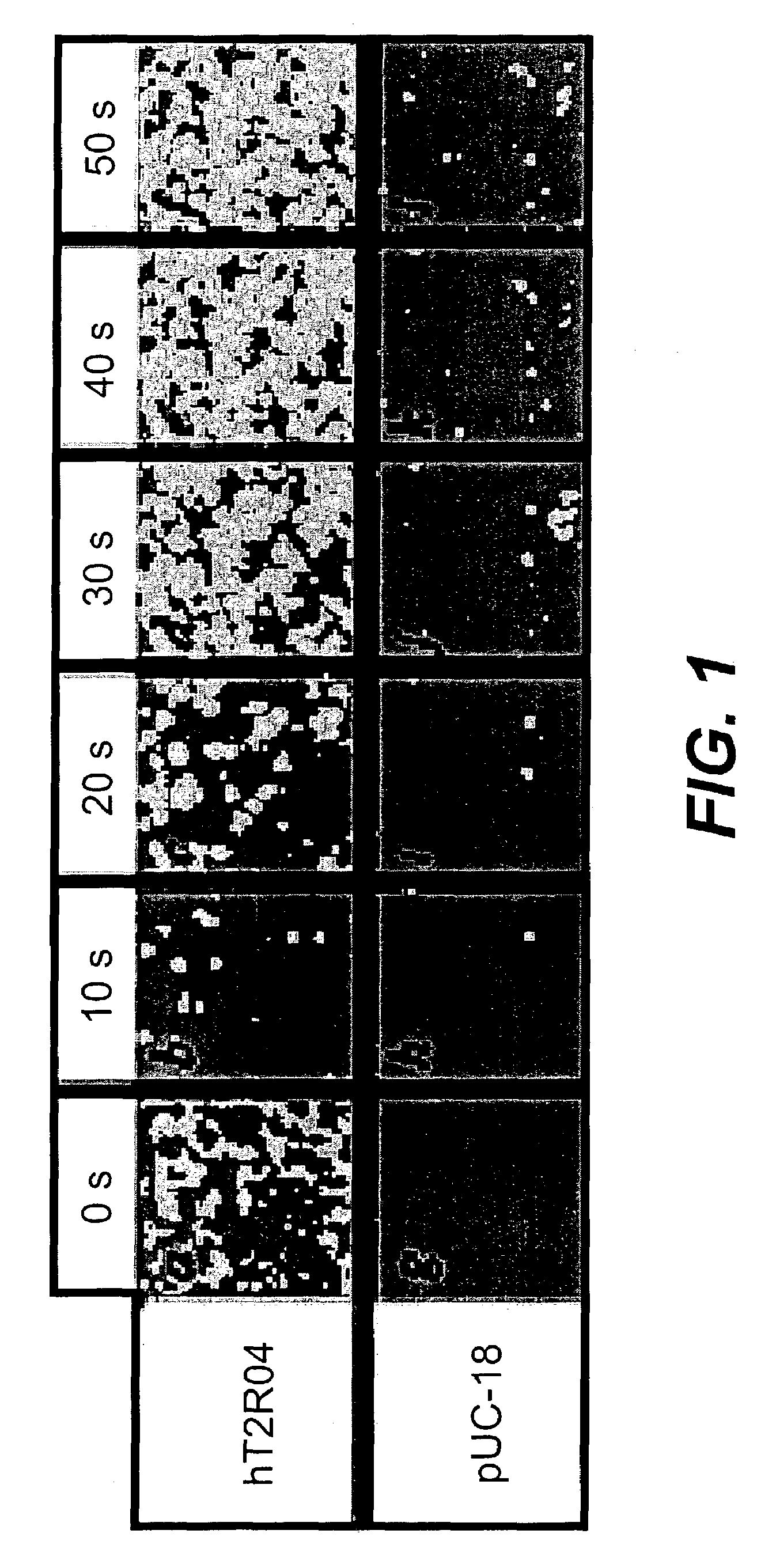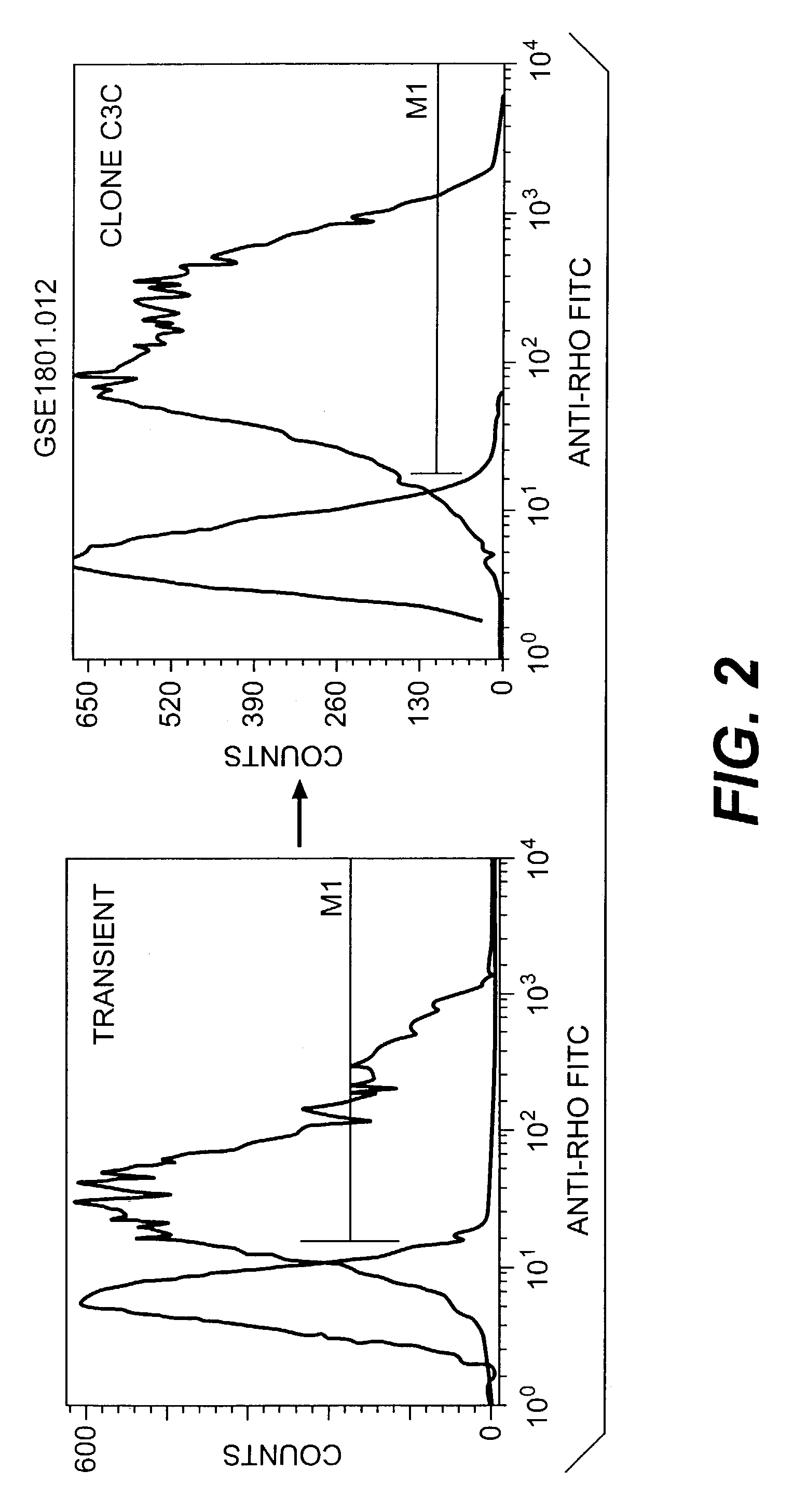Use of specific T2R taste receptors to identify compounds that block bitter taste
a taste receptor and t2r technology, applied in the field of elucidation of bitter compounds, can solve the problems of insufficient expression of receptors in cultured mammalian cell lines, no specific bitter ligand was convincingly matched to any ht2r, and many receptors were not readily expressed in functional studies, so as to inhibit the activation of ht2r61, and block the bitter taste of saccharin
- Summary
- Abstract
- Description
- Claims
- Application Information
AI Technical Summary
Benefits of technology
Problems solved by technology
Method used
Image
Examples
example 1
[0181]In this example, we show that quinine, a bitter alkaloid, specifically activates hT2R4, a human bitter receptor having the DNA sequence contained in SEQ ID NO: 2 in this application.
[0182]Activation of hT2R4 by quinine is measured in a cell-based assay detecting changes in intracellular calcium concentration. In brief, human embryonic kidney cells stably expressing the large T-cell antigen and the promiscuous G protein G15 (HEK-G15) are transiently transfected with the hT2R4 plasmid either by Ca2+ phosphate or lipid-based systems. Transiently transfected cells are seeded into 24 well culture plates, and functional expression allowed to proceed for a total of 48 hours. The cells are then incubated with a fluorescent dye specific for calcium (Fluo-4 or Fura-2; Molecular Probes) that provides a fast, simple and reliable fluorescence-based method for detecting changes in calcium concentration inside the cell. Addition of quinine to cells elicits a signaling cascade leading to the ...
example 2
[0183]A HEK-G15 line stably expressing high levels of hT2R4 on its cell surface (HEK-G15-hT2R4) is also used in high throughput screening assays to find potent hT2R4 antagonists. We generated a stable HEK-G15-hT2R4 line that expresses 2-3 times more receptors at the cell surface than transiently transfected cells (see FIG. 2). In this platform, the cells are seeded into 96 well or 384 well culture plates 18-24 hours before the assay. The cells are then incubated with the fluorescent calcium sensitive dye (Molecular Devices) and are stimulated and read in a standard fluorescence intensity plate reader (FLIPR or VIPR). Using this approach we have been able to further characterize the quinine effect on hT2R4. We found that quinine activates hT2R4 in a typical dose-response relationship (see FIG. 3).
example 3
[0184]In this experiment, to monitor activation of T2R receptors we employed a GTPγS binding assay (FIG. 4). This assay is a classic assay to monitor the activity of GPCRs (Wessling-Resnick and Johnson, 1987). It is based on the fact that in the presence of an appropriate ligand, a GPCR is able to activate G protein. The resultant activated G protein exchanges bound GDP to GTP. If a nonhydrolysable analog of GTP, GTPγS is used the nucleotide remains tightly bound to G protein and can be separated from unbound nucleotide. The use of radioactively labeled [γ-35S]GTPγS allows determination of the amount of bound GTPγS. The amount of bound GTPγS reflects the amount of activated G protein, which in turns reflects activation of the receptor. We used transducin as a G protein in GTPγS binding assay. Transducin is expressed in the visual system and is an ortholog of gustducin. Transducin was purified from bovine retinas (Stryer, Methods Enzymol 96:617-627 (1983)).
[0185]The assay reactions c...
PUM
| Property | Measurement | Unit |
|---|---|---|
| Tm | aaaaa | aaaaa |
| temperature | aaaaa | aaaaa |
| temperature | aaaaa | aaaaa |
Abstract
Description
Claims
Application Information
 Login to View More
Login to View More - R&D
- Intellectual Property
- Life Sciences
- Materials
- Tech Scout
- Unparalleled Data Quality
- Higher Quality Content
- 60% Fewer Hallucinations
Browse by: Latest US Patents, China's latest patents, Technical Efficacy Thesaurus, Application Domain, Technology Topic, Popular Technical Reports.
© 2025 PatSnap. All rights reserved.Legal|Privacy policy|Modern Slavery Act Transparency Statement|Sitemap|About US| Contact US: help@patsnap.com



